The Tasting Room is on the level three of within the Crown Towers Hotel, itself within the vast City of Dreams casino complex, and opened in April 2012. The head chef since the opening has been Guillaume Galliot, who had trained at Jardins des Sens as well as being sous chef at Raffles Grill in Singapore and at Jaan in Beijing before moving here. There is a large bar area and display of wine racks as you enter, with the dining room through to the right as you come in. The carpeted room has pleasingly low noise levels and well spaced tables covered in flawlessly ironed white tablecloths. I opted for a tasting menu at HKD 1,588 (£155).
The wine list is shared with the other restaurants within the City of Dreams, and has around 750 different labels, ranging widely in price. The cheapest was Pacherenc du Vic Bilh Sec Château Bouscassé "Les Jardins" Alain Brumont 2009 at MOP 280 (£27 compared to a retail price of around £16) whilst at the other end of the scale was right up to the (extremely) limited edition Penfolds Ampule 2004 at MOP 2.5 million (£241,000), about double its notional market price in the UK. In reality this wine is a bit tricky to find as only twelve bottles were ever made. More conventional bottles included Donhoff Riesling Kreuznacher Krotenpful 2012
at MOP 580 (£56) compared to a retail price of about £15, Daniel Etienne-Defaix “Les Lys” Chablis 2003 at MOP 980 (£95) for a bottle with a shop price of around £30, and Vega Sicilia Alion 2012 at MOP 1,250 (£121) for a wine that will set you back £52 in a shop. Extensive vertical selections of prestige wine were offered, with Mouton Rothschild going back to the legendary 1945 vintage. There were some pricing oddities buried away in the list. The lovely Antinori Tignanello 2001 was a hefty MOP 3,800 (£367) compared to a UK retail price of £106, yet the 1997 vintage of the same wine was just a fraction more at MOP 3,980 (£385) whereas this vintage costs £149 in a shop: as can be seen, there was quite a difference in relative mark-up between these wines. Consequently, as so often with restaurant wine lists, some careful research of the list in advance will pay dividends.
Bread was made from scratch in the pastry section of the kitchen, and had very good texture, including an excellent mini baguette (17/20). The first course of the tasting menu I had opted for was a crab salad using Alaskan crab, with avocado mousse, blood Mary sorbet and tomato jelly using tomatoes from the area of France where the chef grew up in the Loire. Crab and avocado is a classic combination and the tomatoes had good flavour (16/20).
I was particularly impressed by the next dish. Live Australian abalone was sliced ultra-thin and served raw as the "pasta" element of a modern take on the classic carbonara, which featured a slow-cooked Japanese quail egg and a garnish of Tasmanian truffles and 36 month aged pata negra in place of the traditional guanciale. Abalone is a very tricky ingredient to do well, and this was lovely, with the egg having unusually good flavour, the ham lovely and the truffles bringing their distinctive aroma to the dish (easily 18/20, bordering on 19/20).
Next was another original take on a classic. French onion soup was here presented as a veloute in which was placed an ice cream along with a toast crouton in the shape of a tuile. The veloute was made using Roscoff onions with caramelised onions at the base and a beef stock to deepen the flavour. The ice cream was made with the sweet Cevennes onion, the toast made from the baguette bread. Combining hot and cold in a dish is a tightrope for a chef to walk, but here again it worked due to the sheer depth of flavour of the veloute, which was lovely. This was a deceptively simple dish that apparently takes two days to make (17/20).
Turbot from a very large specimen indeed (the larger the turbot, the better the flavour as a rule) was grilled and came with courgette puree and wild blue foot mushroom fricassee, a little corn, a garnish of culatello ham from Parma and an emulsion of aged Comte cheese. The quality of ingredient sourcing here was shown in the excellent turbot from Brittany as well as the Comte, supplied by the top producer Bernard Antony in Alsace. The fish was precisely cooked and the emulsion did not overpower the dish (17/20).
Another high quality piece of fish appeared next in the form of Dover sole stuffed with dill and served with fennel and a lobster emulsion with a touch of orange zest. The fish was accurately cooked and the lobster sauce had plenty of depth of flavour; this was quite a strong sauce to pair with the sole, but the dish worked well (16/20). The final savoury course was pigeon from the Loire, with cherry chutney, beetroot puree and a few fresh almonds. The cherry was a neat foil for the richness of the excellent pigeon, its acidity bringing balance to the dish, the beetroot supplying an earthy note and the almonds a textural contrast (17/20).
A pre-dessert of raspberry and strawberry jelly was topped with lychee sorbet. The fruits were excellent, with the lychees in particular lovely, the overall effect very refreshing (easily 17/20). The main dessert was apricots with honey and apricot sorbet mascarpone and pistachio cream with pistachio biscuit. This was impressive, the French apricots beautifully ripe and the texture combinations working really well (18/20).
Service was excellent throughout. The bill came to an admittedly chunky HKD 2,258 (£209) for one person, though with some very good wine. The food element was HKD 1588 (£154), which is not cheap but did not feel unreasonable given the genuinely top class ingredients being used throughout. The cooking here is inventive and technically skilled, but the cheffy trickery on show is at no point at the expense of flavour or enjoyment. This was a high-class meal and thoroughly deserves its two Michelin stars.
















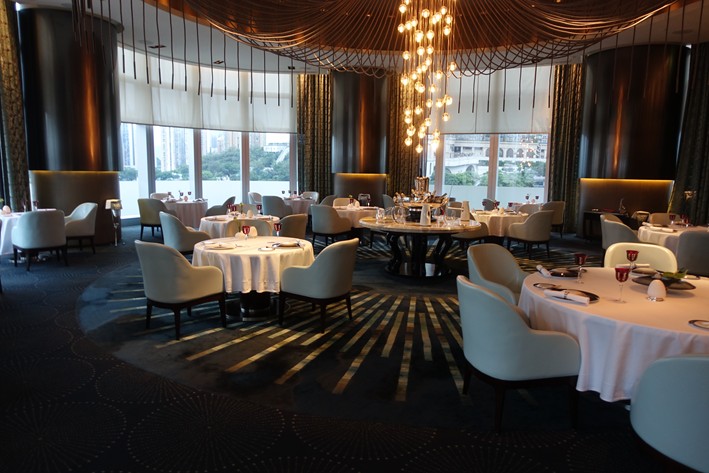


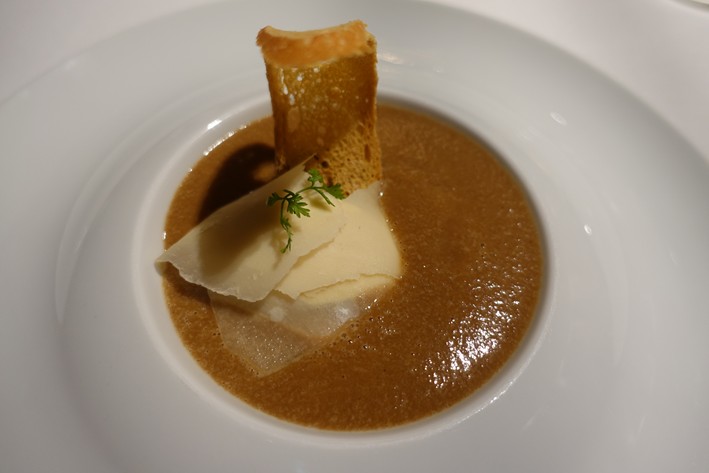
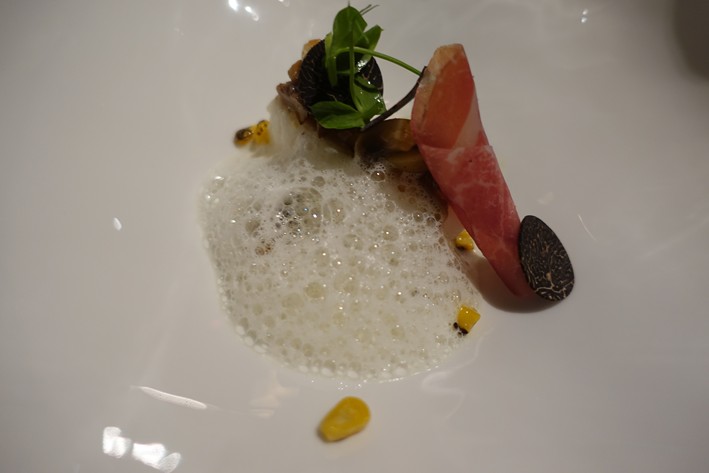
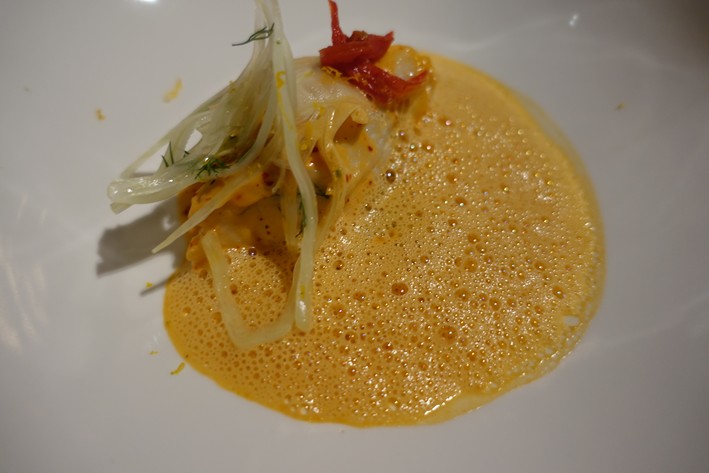

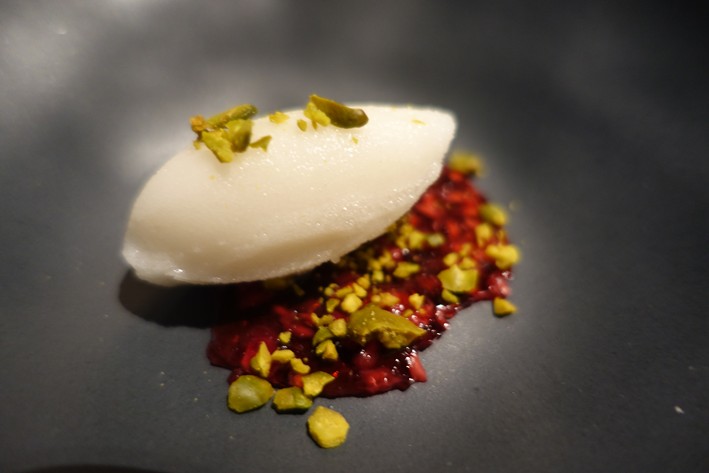

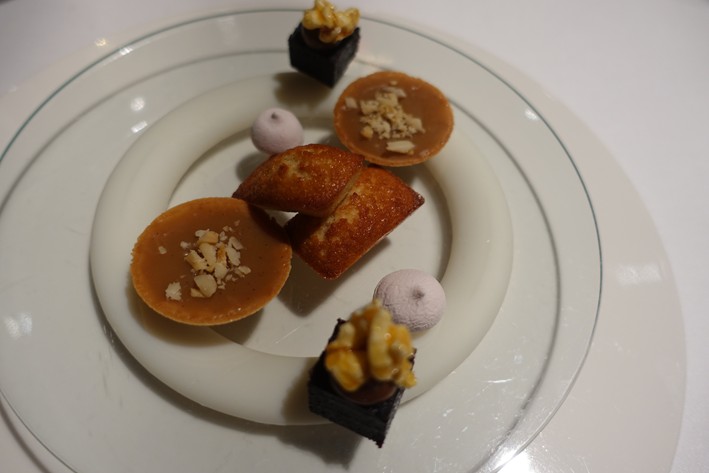


Add a comment
Thank you for submitting your comment, this will be checked and added to the website very soon.
User comments